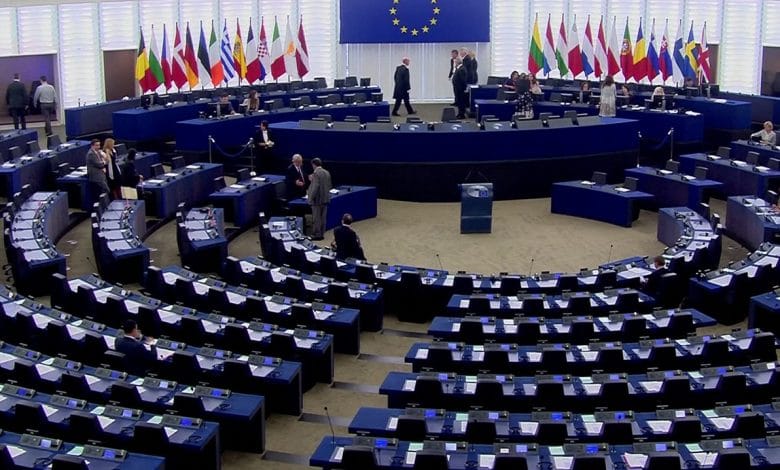
The European Parliament and the Council of EU: Evolution of the Relationship and the Impact on the EU
Introduction
The Council of the European Union, the European Commission and the European Parliament represent the main pillars of the European Union as they have the vast majority of powers and responsibilities. Except for the power to propose laws that is held by Commission, legislative powers are shared between the Council and the Parliament.
Both institutions have been evolved since the establishment of the EU around 1950, but the developments in the EP were much more profound at the levels of the mechanisms of configuration, number of seats and acquired powers, which reflected in its relationship with the Council and competition for powers between them. The relationship between the Council and the Parliament developed slowly and gradually since the launch of the European Union in the 1950s, but there were major milestones with treaties in 1986, 1992 and 2007, that will be discussed in this paper.
At the procedural level, the main determinants of relationship between the two institutions was the development of the legislative mechanisms from consultation to cooperation followed by co decision-making procedure and the scope of application of each mechanism, as well as the bilateral control over budget of the EU and concluding international treaties. Functionally, there were implications for the speed and ease of legislating process in addition to transparency and accountability. From theoretical view, the relationship was an applied model of the conflicting theories of European integration, particularly Federalism and Intergovernmentalism, which resulted in a state of competition and sometimes conflict between the two institutions before negotiation and consensus and a condition of checks and balances became the prevailing pattern.
Background
The European Parliament
The European Parliament is one of the two legislative bodies of the European union. It is the only directly elected EU institution, elected by European citizens of member states according to their populations. The EP consists of 705 members from 27 member states elected to renewable five-year terms and they elect the president of the Parliament (European Parliament). The EP is a co-legislator sharing responsibility with the Council of the EU IN approving, amending or rejecting law proposals introduced by the European Commission. EP has a joint power over budget with the Council, can ask for changes and can reject them as a whole with a two third majority. Parliament closely monitors the work of the Council by submitting oral and writing questions on different policy areas, it can also take the Council to the Court of Justice over claimed transgressions of treaties (Olsen and McCormick 2017,154).
On the other hand, EP consent is mandatory before imposing penalties by the Council on any member state accused to violate EU fundamental principles. Conversely, Council consent is mandatory before revision of statute of members of EP (Pavy, 2020). In addition, EP has the power to remove the Commission and can veto accession of new state member and association treaties (Olsen and McCormick 2017,137).
Historically, the origin of EP lies in the Common Assembly of European Coal and Steel Community based on treaty of Paris 1951. Assembly`s members were appointed by national parliaments of member states without any legislature power apart from ability to force the High Authority of the ECSC to resign through a vote of censure which had been never used (Olsen and McCormick 2017,138). Following establishment of European Economic Community and European Atomic Energy Community by treaty of Rome 1957, the ECSC Common Assembly was expanded to cover all three Communities as the “European Parliamentary Assembly” (Bux, 2020) with a joint responsibility with Council of Ministers over the budget and possibility of election by direct universal suffrage (Olsen and McCormick 2017,138).
Assembly was renamed in 1962 to be the European Parliament but the Council of Ministers kept apposition to direct election till 1970. only in 1970 the European Council changed his mind and first direct election held in 1979 (Olsen and McCormick 2017,139). As new countries joined the European Community, successive enlargements occurred in the EP from 1973 to 2007. This was accompanied by gradual increase in power with introduction of co-operation decision making procedure with the Council by Single European Act treaty in 1986. EP role as a co-legislator beside the Council began with approval of co-decision procedure by Maastricht treaty in 1992 and its extension through successive treaties up to Lisbon treaty in 2007 (Bux, 2020).
Although the EP is the only elected EU institution, it lacks three of typical defining powers of legislature: it can`t introduce proposal for new laws, or approve laws separately, or raise revenues (Olsen and McCormick 2017,137).
The Council of European Union
The Council of EU is one of the most powerful institutions in the EU, it is an intergovernmental body that consists of multiple councils each concerned with specific policy aera. The members of the Council\s are governmental ministers of member states (Olsen and McCormick 2017,121). The presidency of the Council is rotating every six months, where the Council is chaired by the representative of member state that holds EU presidency (Pavy, 2020).
The Council adopts EU legislations either with the EP through ordinary legislative procedure or alone after consultation of the Parliament (Pavy, 2020). It also adopts EU budget in conjugation with the EP. According to special legislative procedure, the Council adopts EU own resources system and the multiannual financial framework, the later must have consent from the Parliament (Pavy, 2020). The Council concludes international agreements on behalf of the EU which are negotiated by the Commission and require Parliament consent in most cases. In addition to coordination of economic policies, common foreign and security policy and judicial cooperation of the member states (Olsen and McCormick 2017,121). It had a mix of legislative and executive functions.
Historically, the origin of the Council of EU lied in the Special Council of Ministers of ECSC 1952. It was created to balance the supranational character of the High Authority of ECSC and defend national interests, in addition to protecting small countries “Belgium, Netherlands, Luxembourg” from being overwhelmingly dominated by other members “France, West Germany, Italy”, with establishing of EEC and Euratom depending on treaties of Rome, similar Councils were created by them, all using the Qualified Majority Voting to ensure balance between larger and small states where the six member states had 17 votes according to their populations (Olsen and McCormick 2017,122).
After Merger treaty, the 3 Councils became a single Council of Ministers in 1967. Its name was changed to Council of the EU after Maastricht treaty in 1993 (Olsen and McCormick 2017,123). Until the introduction of co-decision mechanism by Maastricht treaty, the Council was the essential legislature of the EU, the mechanism extended reaching treaty of Lisbon where EP and the Council became on equal foot co-legislators.
Although the Council was established to support national interests of states in front of supranationalism, regular meetings and informal contacts help to develop collective understanding and identity for the favor of European interests (Crobett, et al 2012, 55 cited in University of Portsmouth). However, the power of veto introduced by Luxembourg Compromise 1965, it was rarely used and decision making become more consensual through QMV (Olsen and McCormick 2017,123) .
The EP and the Council of EU: Institutional Relationship and Shared Powers
Legislation Procedures
For about 3 decades, the Council of Ministers dominating the legislature function in the European Community, on the other hand, the EP had a very modest role that is little more than an advisory forum. Parliament took itself more seriously and struggle for more power and responsibilities and succeeded in that to a large extent.
Consultation procedure represents the primitive decision-making mechanism between the Council and the EP, according to it the Council must take opinion of the Parliament before taking decisions otherwise the act will be illegal and could be canceled by the Court of Justice (Schonard, 2020). The Council is not legally obliged to take account of Parliament rejection or amendments. No time limit was placed to the EP to send its opinion which gave it the power of delaying which is a traditional opposition tactic (Olsen and McCormick 2017,152). Consultation procedure was the most used one till the treaty of Lisbon Figure 1. The procedure still applies in a limited policy area (monetary policy, competition, employment and social policy) (Handbook on the Ordinary Legislative Procedure 2017, 46).
Although the possibility of election of the Parliament by direct universal suffrage was stipulated in treaty of Rome since 1957 and the initiatives and resolutions of EP members in 1960 to transform the Assembly to a directly elected Parliament, election didn’t take place till 1979 (Deschamps and Maufort, 2016). In 1920, the Court of Justice recognized the right of the Parliament to be consulted on draft legislation and to bring cases to the Court of Justice (Dehousse, 1998 cited in Olsen and McCormick 2017, 139).
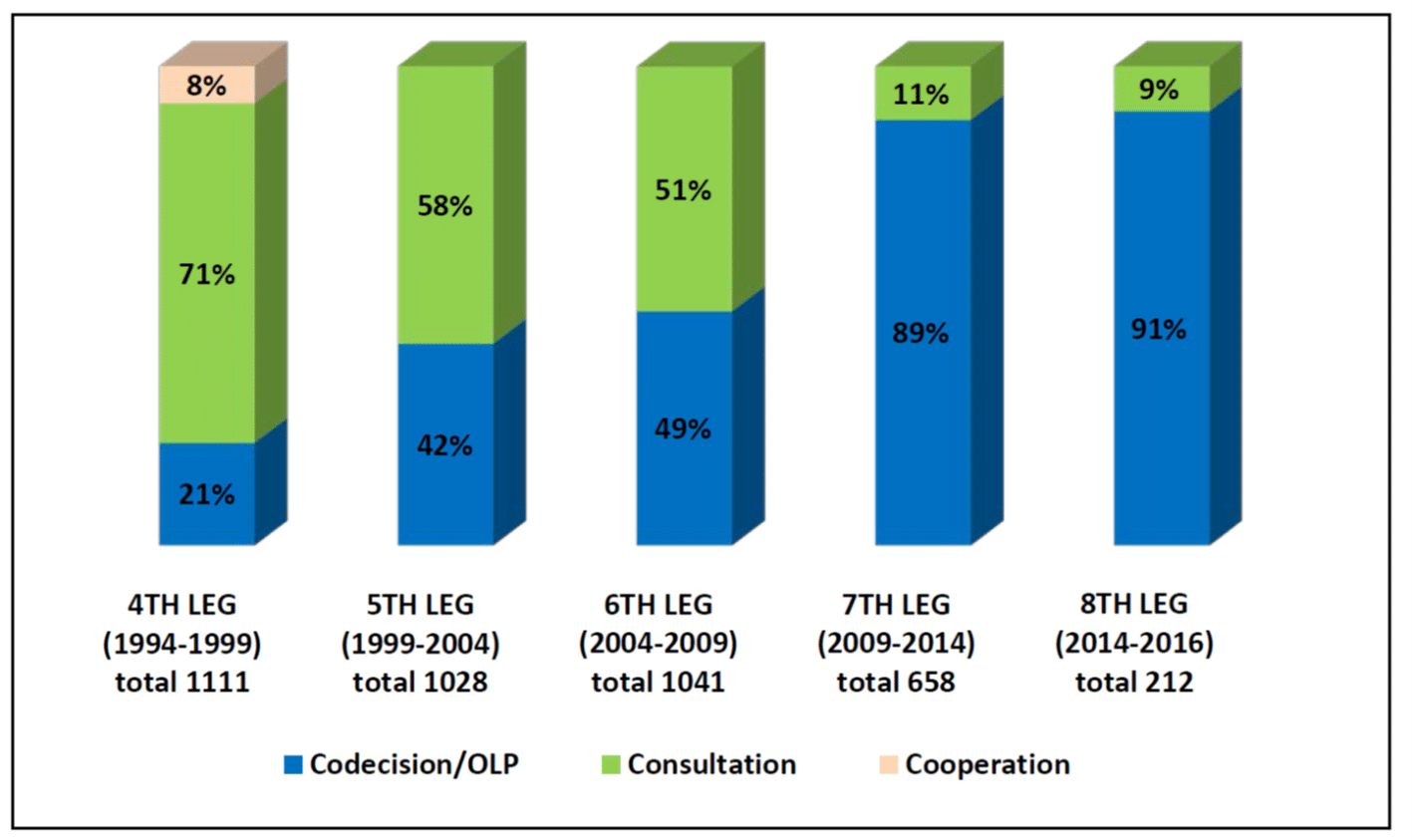
Figure 1: Distribution of legislative proposals under the cooperation, consultation and ordinary legislative procedures per legislative term (Handbook on Ordinary Legislative Procedure 2017, 54)
Co-operation procedure was introduced for the first time with Single European Act treaty 1987 represented a major step to the Parliament towards real legislative power. Triangular relationship began between the Council, the Commission and the EP (Neuhold, 2000). New proposal submitted from the Commission to the Council and EP, the latter delivered an opinion (First Reading) to the Council to adopt a common position without obligation, but the Council did so in practice. The Parliament voted in the common position (Second Reading) if rejected the Council decided unanimously, if the EP amended the proposal it would be backed to the Commission, if adopted the Council decided by QMV and by unanimity in case of rejection (PDC, EU Monitor). The procedure was applied first to certain laws, notably regional policy, environment and the European social fund, extended later by Maastricht treaty 1993 to cover new policy areas. After Amsterdam treaty 1999, cooperation procedure preserved only in few areas and it was finally replaced by Lisbon treaty with the ordinary legislative procedure (Olsen and McCormick 2017,152). Figure 2
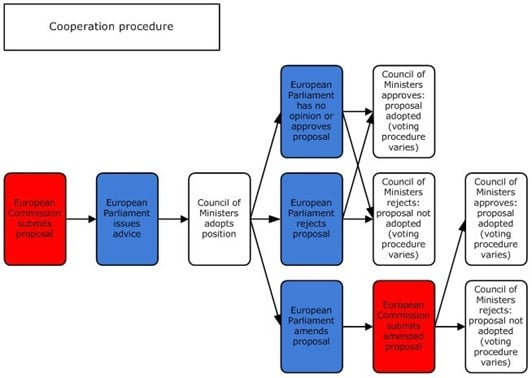
Figure 2: Co-operation procedure (PDC. EU Monitor)
Co-decision procedure granted the EP power of veto for the first time in limited policy areas through the right of third reading. The procedure was introduced by Maastricht treaty 1993 extended progressively by successive treaties of Amsterdam 1999, Nice 2003 and finally Lisbon treaty 2007 to cover the vast majority policy areas included agriculture, fisheries, transport, environment, single market, education, culture and other fields (Olsen and McCormick 2017,152). Before Amsterdam treaty, the Council could still overrule the Parliament rejection after the third reading, but this was ended by the treaty and a Conciliation Committee is convened if the Council and the Parliament couldn`t reach a compromise with the second reading, in the Committee they have to reach a compromise text within six weeks (Neuhold, 2000). If the Council and the Parliament couldn’t reach agreement in the Committee, the procedure stopped and the act is not adopted, if they could, the joint text sent to a third reading by both of them to be adopted only if both of them approved the joint text (Schonard, 2020) Figure 3.
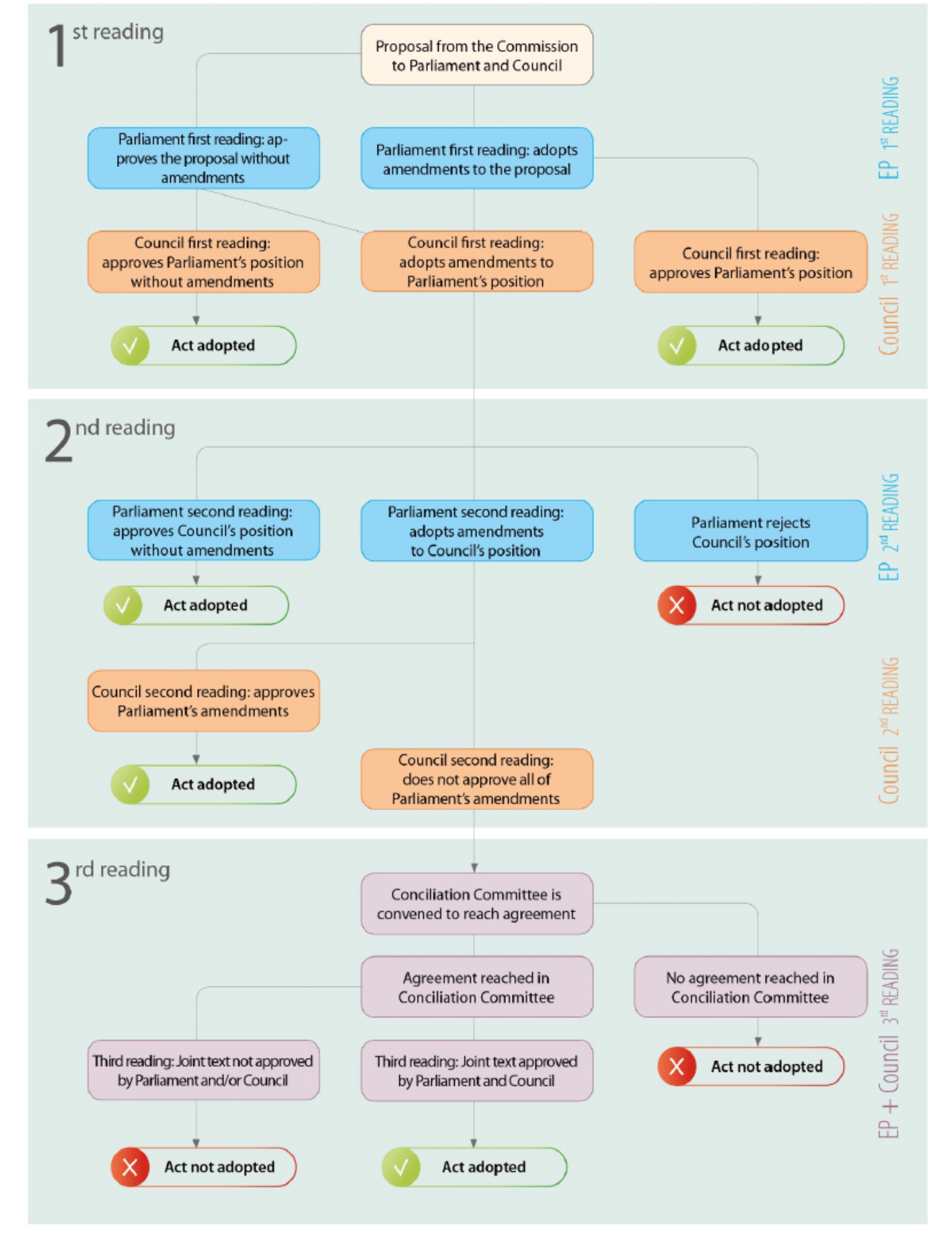
Figure 3: The ordinary legislative procedure step by step (Handbook on OLP 2017,16)
After Lisbon treaty, co-decision procedure extended and applied to more 25 legal bases, named formally Ordinary Legislative Procedure, it includes QMV in the Council. However, it doesn’t apply to certain important areas included direct taxation policy and transnational aspect of family law (Neuhold, 2000).
Since Amsterdam treaty, co-legislators could reach agreement at first reading, which facilitates informal negotiation at all stages of the procedure, as such practice was adopted by Joint Declaration in 1999 and revised in 2007. Negotiation took the form of Trilogues as informal tripartite meetings between representatives of the Parliament, the Council and the Commission which acts as a mediator between the two legislators. Trilogues may be organized at any stage and can lead to what are known as “first reading”, “early second reading”, “second reading” or to a “joint text” during the Conciliation Committee. Trilogues consist of political negotiation preceded by technical preparation (Handbook on OLP 2017, 32). Figure 4.
Consent Procedure is a special legislative procedure that requires the Parliament to either approve or reject the proposal in question from the Council without ability to amend it, where the consent or lack of it cannot be overruled, it is used in establishment of Public Prosecutor`s Office and legislation adopted under the subsidiary legal basis and other non-legislative issues (European Council, Council of the European Union, 2018). This procedure approved for the first time with the treaty of Rome 1957 and extended with Maastricht’s treaty 1992 (Publications Office of the European Union).
Control Over Budget
Before treaty of Luxembourg 1970, budgetary power lied in the Council alone while the Parliament had only consultative role. The treaty of 1970 gave the Parliament control over “non-compulsory expenditure” which was about 8% of the budget at that time while the “compulsory expenditure” remained with the Council. Treaty of Brussel 1975 gave veto right to the Parliament to reject budget as a whole (Calatozzolo, 2020). Before treaty of Lisbon 2007, the Council and the EP engaged in two readings of the budget proposal presented by the Commission, the Parliament either adopts or rejects the budget as a whole (Calatozzolo, 2020). Treaty of Lisbon expanded the power of the EP by removing distinction between compulsory and non-compulsory expenditures allowed the Parliament to ask for changes in the budget and for new appropriations for areas not covered (Olsen and McCormick 2017,154).
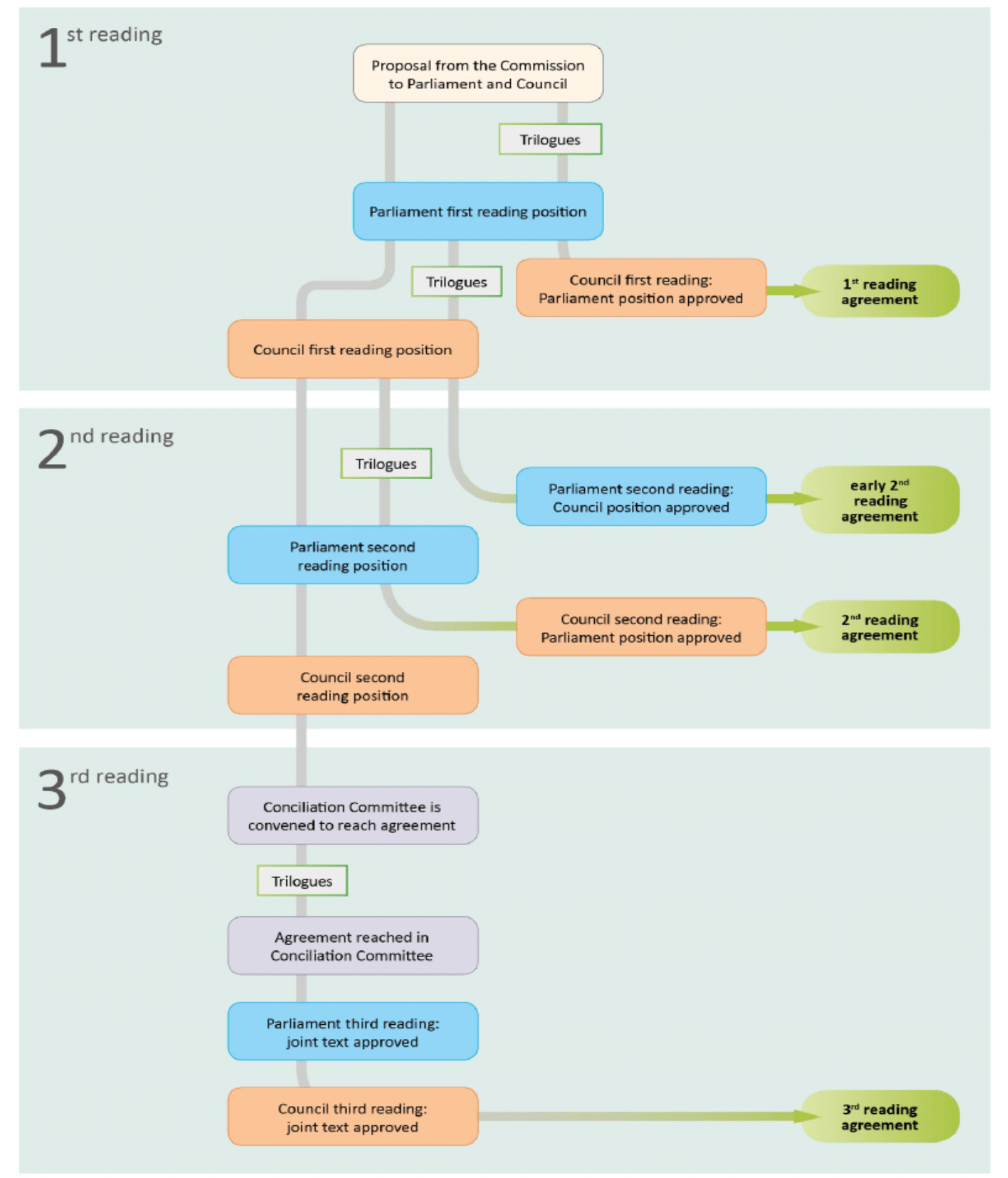
Figure 4: Different steps for agreeing under the Ordinary Legislative Procedure step (Handbook on OLP 2017,31)
The new budgetary co-decision procedure was more transparent and also simplified with only one reading in each institution (Calatozzolo, 2020). The Parliament can completely reject the budget with 2/3 majority that occurs only 3 times in (1979, 1982 and 1984) (Olsen and McCormick 2017,154). The Conciliation Committee failed to reach agreement 3 times (2011, 2013 and 2015 budgets), so the Commission presented a new draft budget and was finally adopted (Calatozzolo, 2020).
Concluding of International Agreements
The Commission or the Higher Representative represent recommendations about international agreements to the Council which defines the mandate for negotiation and nominates the Union negotiator. The EP must be informed at all stages of the procedure. Treaty of Lisbon required consent of the EP in all fields under the Ordinary Legislature Procedure as well as Common Commercial Policy (Schonard, 2020), while only consultation is required for agreements in the fields of foreign and security policy. The Parliament consent is also required for the accession of new EU members, association agreements, agreements for withdrawal from the EU and imposing penalties on a member state for serious breach of fundamental rights (Handbook on OLP 2017, 47).
Quasi – Constitutional Procedures
Treaty of Lisbon maintained the power of the Council over the system of Own Resources which present about 99% of EU revenue. Only Parliament consultation is required, and the Council decides unanimously (Schonard, 2020). The Council can adopt establishment of new own resources or abolishing existing ones only after consent from the Parliament (Delasnerie, 2020).
Proposals of provisions for election of the Parliament are presented by the EP, decision is taken by the Council after consent of the Parliament. The EP requires the Council’s consent to decide adoption of the statute for Parliament members in addition to Commission opinion. Amendment of the protocol of the Court of Justice is proposed by the Court and decided by Ordinary Legislative Procedure (Schonard, 2020).
Monitoring and Accountability
The Parliament regularly monitors the work of the Council by submitting oral and written questions on different policy areas. Both institutions closely work together on common foreign and security policy, immigration issue, international crime and judicial cooperation. The EP can take the Council to the Court of Justice over alleged infringements on the treaties (Olsen and McCormick 2017,154).
Nature of the Relationship
Conflict and competition of different theories of European integration mirrored in the relationship between the EU and the Council. Federalists struggling for supranational institutions with popular legitimacy protecting the common European interests as the only way to achieve real and effective integration. On the other hand, Inter-governmentalists saw that the national state was still the rational unitary actor in international relations and the role of institutions is just coordination and cooperation to resolve conflict and hold bargains to share benefits according to strength of each player (Cini and etal 2009, 88).
The Parliament as a directly elected institution by European citizens is supposed to express people’s opinion and protect common European interests overlooking the narrow national scope. The Council of Ministers as a representative of the elected governments of the member states tends to protect their national interests and supporting their image domestically. Intergovernmentalism was the dominant integration theory in the EU since 1960 competing with Neofunctionalism (Cini and et al 2009, 87). Motives to set up the Council of Ministers was to defend national interests of the small countries balancing the supranational character of the High Authority of ECSC dominated by big countries (Olsen and McCormick 2017,122).
Empty Chair Crisis in 1965 highlighted this conflict clearly, where France under leadership of Charlee de – Gaulle began boycotting meeting of the Council of Ministers to prevent any new decisions about policies and laws refused by de-Gaulle (Olsen and McCormick 2017,71). Being against Federalism all the time, De-Gaulle attempted to discard the supranational elements of treaty of Rome including; the possibility of electing the Assembly by direct universal suffrage, giving it more power over the budget, introducing of majority voting system in some policy areas in the Council and suggestions from the Commission to introduce independent sources of income to the revenue (Deschamps, 2016). All these amendments were sparks that set off the crisis which ended by Luxembourg compromise as an agreement to de-Gaulle opinion to a far extent (Olsen and McCormick 2017,71).
Federalists struggle for strengthening institution’s democratic legitimacy through election by direct universal suffrage and power expansion over legislation and budget. De-Gaulle opinion was against election of the Parliament by universal suffrage considering the Council of Ministers the only authorized legislature body (Deschamps, 2016). Only in 1976 at summit hold in Brussel the Council gave its final approval for election to take place for the first time in 1979. A new dimension in the relationship began after the Parliament obtained its first real legislative power by Luxembourg treaty 1970 and shared the responsibility with the Council over the budget. It was the first time the Parliament to have a veto power over one of the Council decisions. This has promoted both institutions to more coordination, adopting negotiation and conciliation to achieve a common position. Thus, there were only 3 occasions where the Parliament used veto against the budget.
Introducing of the “second reading” to the Parliament through the cooperation procedure which approved by the SEA treaty in 1986 gave the Parliament the power of delaying the proposals which wasn’t limited by specific time. The procedure allowed the EP to “flex its legislature muscle” for the first time otherwise it improves the interinstitutional dialogue significantly (Neuhold, 2000). Building on positive experiences of corporation procedure a “third reading” was added by Maastricht treaty to start the co-decision procedure which represented a new era for interinstitutional conciliation. Convening a Conciliation Committee became a formal stage when the Parliament and the Council couldn’t reach a compromise. They have to reach an agreement within only six weeks (Neuhold, 2000). Alongside the Committee, another set of informal meetings “Trilogue” evolved to reconcile positions before formal meetings. Trilogue was very efficient and applied through all stages of the procedure. The dynamics of co-decision procedure reflected positively in bringing both institutions to negotiation table in search for compromise and consensus (Neuhold, 2000).
Co-decision procedure extended to cover more policy fields by successive treaties beside the end of the Council overrule on the third reading by Amsterdam treaty. All these changes tagged by Lisbon treaty to make the EP and the Council as equals in legislative power which settled a new stage of balanced relationship between them for the first time. They are obliged more than any time before to negotiate to adopt common positions.
The Impact of Relationship Evolutions on the Operation of EU
The EP evolution from a merely advisory body to a partner in the legislative process with the Council represented a quantum leap in the EU integration process. Although this evolution proceeded very slowly with serious obstacles till it becomes the dominant pattern “ordinary legislature procedure”, it was progressing continuously and steadily. Election of the EP by direct universal suffrage and acquisition of co-legislation power on equal foot with the Council transformed the EU from pure intergovernmental organization to a mixed model merged between IG and Federalism.
The parliament as a supranational institution directly elected by European people, focused on the common European interests and public opinion and balancing the attitude of the Council in supporting national interests of the member states. Gaining power to the only directly elected institution in the EU was an important step towards democratization of the EU, transparency and accountability. The Parliament gave great importance to ensure that the legislature process is transparent and open as much as possible to allow public monitoring and accountability (Handbook on OLP 2017,39). The measures included that all meetings in the Committee are public and most of them are web streaming, all official documents are publicly available and in all formal languages. At the level of interinstitutional negotiation, the Parliament together with the Council and the Commission seek to ensure the openness of the process to be public (Handbook on OLP 2017,40).
The co-decision procedure limits the maneuver of each participant, applies a form of functional checks and balances among institutions in which democratically elected and governmental representative institutions intervene (Maurer, 2003). The co-decision procedure since Amsterdam treaty provide the option to reach agreements by the co-legislators from the first reading (Handbook on OLP 2017, 30). This practice was codified in the Joint Declaration on Practical Arrangements for the co-decision procedure which declared that institutions should working on reconciliation their positions throughout the procedure for the adoption of the act as early as possible (Handbook on OLP 2017, 30). This amendment shifted the bulk of workload to the negotiation table in its formal “Conciliation Committee” and informal “Trilogue” models. Progressive contacts between members of both institutions in addition to the Commission allow easier compromise and consensus.
The assumption that participation of the Parliament as a co-legislator with the Council may complicate or slow down the legislation procedure has, so far, not been realized (Neuhold, 2000). The EP avoided to be seen responsible for failure of legislation process, so it used its veto power very carefully. In the period between November 1993 and March 1999, 275 legislative drafts were submitted, 177 of them were adopted, 2 cases failed to achieve agreements by the Conciliation Committee and the Parliament used veto power in one case only (Neuhold, 2000). Between Nov 1993 and June 1999, 557 of final agreements on legislative drafts were concluded after the first reading (Maurer, 1999) Figure 5.

Figure 5: Percentage of files under the ordinary legislative procedure adopted at 1st, early 2nd, 2nd or 3rd reading per legislature since 1999 (Handbook on OLP 2017, 55)
While the co-operation procedure lasted 734 days on average, the co-decision procedure between (1993 – 1997) lasted 710 days on average and only 634 days where no conciliation was necessary while it took 815 days with conciliation (Maurer and et al 2003, 52).
Conclusion
Election of the EP by universal suffrage in 1979 represented a moral support for its struggle to more power and responsibilities in the EU. Change of the advisory mission of the Parliament began after 1986 treaty with the co-operation procedure while the co-decision mechanism launched after 1992 treaty was the first step towards equality to the Council in the legislation process. Treaty of Lisbon 2007 was the address of stage of co-legislation, checks and balances the EP and the Council. Co-decision procedure extended to include power over budget, concluding international agreements and relative powers over other institutions.
The relationship between both institutions was fluctuant according to different succeeding treaties and also personality of powerful leaders, from domination of the Council with merry advisory role of the Parliament to the Struggle of the Parliament to gain more powers leading to clash and crisis of Empty Chair. Competition between the Parliament and the Council resulted in more equal distribution of legislative power up to co-legislative procedure which began a new era of relationship between them depending on negotiation and conciliation beside activation of checks and balances mechanism.
The competition and conflict were a reflection of conflicting different theories of European integration, particularly Federalism focusing on supranational institutions and common European interests and Intergovernmentalism based on national state as a unity actor and preserving of national interests. Co-legislation on equal foot was an important step towards democratization by giving the only directly elected institution in the EU more powers and responsibilities, this reflected on transparency and accountability as the Parliament gave great importance that all steps of the procedure to be public and availability of official documents.
References
Bux, Udo. 2020. “The European Parliament: historical background”. European Parliament. Feb 2020 link
Calatozzolo, Rita. 2020. “The budgetary procedure”. European Parliament. September, 2020 link
Cini, Michelle. Pérez, Nievies. Borragán, Solórzano 2009. “European Union Politics”. Chap 6 “Intergovernmentalism” p 87-89. Third Edition October 2009. Oxford University Press
Corbett, Richard. Peterson, John and Bomberg, Elizabeth. 2012. “The European Union: How Does it Work?” p 55. OUP Oxford, 2012. Cited in University of Portsmouth. European Studies. Intergovernmental versus Supranational – European Studies Hub (port.ac.uk)
Dehousse, Renaud. 1998.” The European Court of Justice”. New York: St. Martin’s Press,1998, 98. Cited in Olsen, Jonathan and McCormick, John. 2017 “The European Union: politics and policies”. Chap 7 “The European Parliament” p 139.
Delasnerie, Alix 2020. “The Union’s revenue”. European Parliament. August, 2020 link
Deschamps, Etienne and Maufort, Laurence. 2016. “The new European Parliament”. 08/07/2016 link
European Council, Council of the European Union. 2018. “Special legislative procedures”. Last updated in Oct 1, 2018 https://europa.eu/!Hy77Yk
European Parliament, n.d. Members of the European Parliament. Accessed in December 25, 2020. link
Handbook on the Ordinary Legislative Procedure, 2017. Chap3” The Ordinary Legislative Procedure” p, 16. Chap 4 “Interinstitutional Negotiation” pp (30-40). Chap 7 “Special Legislative Procedures” pp (46-47). Chap 9” The Ordinary Legislative Procedure through Figures” p 54-55. European Parliament. Nov 2017 link
Maurer, Andreas 2003. “The Legislative Powers and Impact of the European Parliament”. JCMS 2003 Volume 41. Number 2. pp. 227
Maurer, Andreas. Mittag, Juergen and Wessels, Wolfgang 2003. “Fifteen into One? The European Union and its member states”. Chap 2” The European Union matters: structuring self-made offers and demands” p 52. Manchester University Press 2003
Maurer, Andres 1999 “(Co-)Governing after Maastricht: The European Parliament’s institutional performance 1994 –1999. Lessons for the implementation of the Treaty of Amsterdam”. Study for the European Parliament, Directorate General for Research submitted under Contract No. IV/99/23 p,8
Neuhold, Chiristin. 2000. “Into the New Millennium: The Evolution of the European Parliament from Consultative Assembly to Co-legislator”. In: Eipascope. No 1 pp 1-2. http://aei.pitt.edu/782/1/2000_1_1.pdf
Olsen, Jonathan and McCormick, John. 2017 “The European Union: politics and policies”. Chap 7 “The European Parliament” pp (137-154). Chap 6 “The Council of the European Union” pp (121-123). Chap 3” Emergence: To the Single Market and Beyond” p 71. Sixth Edition. Boulder, CO: Westview Press, 2017.
Pavy, Eeva. 2020. “The Council of the European Union”. European Parliament. Feb 2020 link
Pavy, Eeva. 2020. The “European Parliament: Powers”. European Parliament. Jan 2020. link
PDC. n,d. EU Monitor. “Cooperation procedure (SYN)”, Accessed in 25 December 2020 link
Publications Office of the European Union. EUR-Lex. “Consent Procedure”. Accessed in December 27, 2020 link
Schonard, Martina.2020. “Supranational decision-making procedures”. European Parliament. Nov 2020 link




